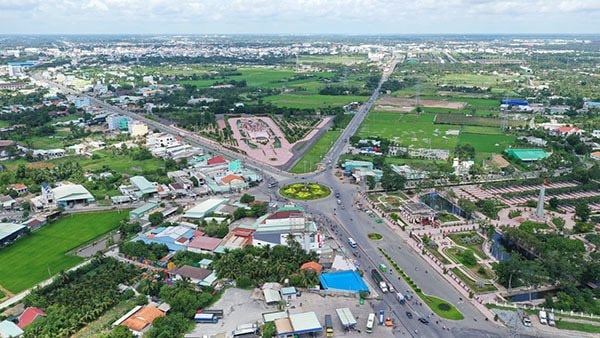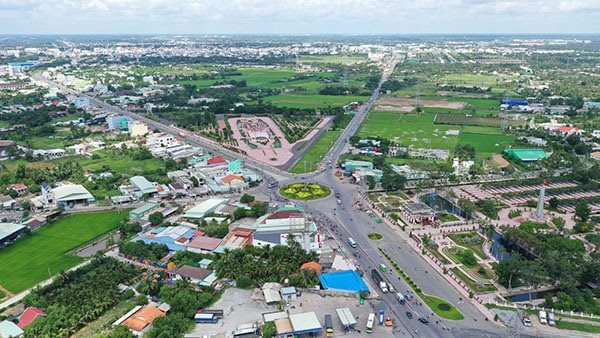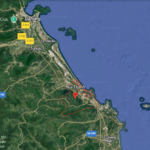The proposal to rearrange and reorganize administrative units at various levels and build a model for local government with two levels of administration has resulted in a total of 52 administrative units at the provincial level undergoing rearrangement.
As part of this reorganization, Tay Ninh and Long An provinces will merge to form a new province named Tay Ninh, with its administrative center located in Tan An city, the current location of Long An province. This new province will have a natural area of 8,536.5 km2 and a population of 2,959,000 people.
According to Báo Long An, the new Tay Ninh province boasts a unique geographical location, acting as a bridge connecting the vibrant gateway of the Mekong Delta to the bustling border with Cambodia in the Southwest.
This strategic position transforms the new Tay Ninh province into a vital conduit, linking the dynamic city of Ho Chi Minh with the fertile rice and fruit basket of the Mekong Delta and Cambodia. With its enhanced size and population, the new province is poised to become one of the largest provinces in the country, setting a solid foundation for breakthrough development in the future.
The article in Báo Long An also highlights the strengths of the new province, born from the combined forces of the two former provinces. The new Tay Ninh takes pride in its substantial economy, with a combined GRDP in 2024 estimated at approximately VND 292,000 billion. Prior to the merger, according to VnExpress, the new Tay Ninh province was already ranked among the top 10 provinces with the largest GRDP in Vietnam.
The economic prowess of the new Tay Ninh stems from the diversity and complementarity of its industries and sectors, creating a vibrant economic landscape.
The southern region, formerly Long An, excels as a major industrial hub in the region, attracting significant foreign direct investment (FDI). It once led the country in the number of industrial parks and clusters.

The proposed merger of Long An and Tay Ninh provinces to form the new Tay Ninh province, with its capital expected to be located in Tan An city, Long An province. The image shows a portion of Long An province.
Meanwhile, the former Tay Ninh province has also attracted 394 FDI projects with a total capital of over USD 10.2 billion (as of January 2025), placing it among the top FDI attractors in the Southern region. It has developed industries such as textiles and garments, footwear, agricultural product processing, mechanics, electronics, and plastics, along with a distinct advantage in warehousing and logistics services due to its proximity to Ho Chi Minh City and its network of seaports.
Tay Ninh’s Robust Infrastructure
Tay Ninh’s infrastructure acts as a powerful lever, propelling its development to new heights. The new province benefits from a well-established transportation network that facilitates seamless inter-regional and international connections.
Vital national highways such as the bustling Highway 1, Highway 22 (part of the Asian Highway Network), Highway 62, and Highway 50 form the backbone of the network, supported by important provincial roads like DT830 (Duc Hoa – Tan Tap), DT823, DT824, and DT825. This network establishes a strong link between the northern and southern regions of the province.
Additionally, the Long An International Port on the Soai Rap River, capable of accommodating large vessels of up to 70,000 DWT, is emerging as a significant maritime gateway for the region, boosting logistics and import-export activities.
Ho Dau Ting, with its 27,000-hectare area and 1.58 billion cubic meter capacity, is not only a heavenly gift but also a strategic source of water for industrial, agricultural, and domestic use for several neighboring provinces, ensuring water security for the entire region.
Industrial parks and clusters are scattered across the new province, attracting investments and providing employment opportunities for tens of thousands of workers, contributing to the overall economic development.
With large-scale and modern industrial parks such as Phuoc Dong, Thanh Thanh Cong, Trang Bang in the north, and Long Hau, Phu An Thanh, Vinh Loc 2, Tan Duc, Hai Son, Viet Phat in the south, the new Tay Ninh boasts a robust industrial foundation.
Following the approval of the merger by the provincial People’s Councils of Tay Ninh and Long An, a plan for the new administrative structure of Tay Ninh province (retaining its name post-merger) has been established. Consequently, the new Tay Ninh province will comprise 96 administrative units at the commune level.
This arrangement is a result of streamlining and simplifying the administrative apparatus, reducing the number of communes, wards, and towns from 280 in the two pre-merger localities. This reorganization aims to enhance state management efficiency, ensuring alignment with population size, natural area, development conditions, and the central government’s general orientation.
As a result of this reorganization, the former Tay Ninh province will contribute 36 administrative units at the commune level to the new province, while Long An province will contribute 60, including 4 wards and 56 communes, after reducing 126 units (a 67.7% reduction).
(Consolidated)
The Rush for the Riviera: $4 Billion and Counting
At the 2025 Investment Conference themed “Choose Ba Ria – Vung Tau,” the provincial People’s Committee granted investment registration certificates and investment proposals to 53 projects with a total capital of over $1 billion and 71,000 billion VND.
“Underutilized Potential: Rediscovering the Role of Logistics Hubs in Streamlining Transportation Networks.”
With 69 logistics centers spread across the nation, the potential for a comprehensive network is yet to be realized. The advantages of such a model are vast, but they remain untapped. To fully harness the power of these centers, a strategic approach is necessary, involving policies, resources, and technological advancements that will propel the development of a robust and interconnected logistics network.
Title: Resolution 66: Eradicating Fundamental Flaws in Lawmaking.
“President of the National Assembly, Tran Thanh Man, emphasized that Resolution 66 stems from the urgent need to enhance the quality of institutions, unlock resources for development, and address the legitimate aspirations of the people and businesses for a transparent and equitable legal environment.”
“Vietnam: Forging a Hungary-Southeast Asia Alliance”
During his meeting with Hungarian President Sulyok Tamás, General Secretary To Lam emphasized Vietnam’s commitment to its special relationship with Hungary. He affirmed Vietnam’s willingness to act as a bridge between Central European countries and Southeast Asia, while also exploring new avenues of cooperation in areas such as nuclear energy, defense, and innovation.











































